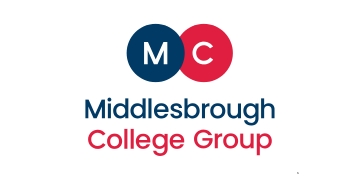Recent and ongoing Ofsted reforms aim to ease the stress of inspections. This is much-needed and especially reassuring to those who face unfavourable outcomes. But there is another way to reduce the stress of an Ofsted report, and that is to take proactive action about how to communicate it.
The report may say things about your school that you don’t relish sharing with your community, but the worst thing you can do is to bury your head in the sand.
Yes, you’d rather be ordering a banner. Yes, you’d rather be tipping off the local media. But instead of dreading their call, it’s best to act quickly and take control of the situation.
Currently, headteachers and school trusts typically receive a draft Ofsted report about 10 days after an Ofsted inspection. The final report is normally published on Ofsted’s website about 30 days after the inspection.
During this time, a school can request changes if necessary. Whether or not you are doing that, this time before Ofsted publishes its report is crucial for preparing your communications strategy.
Here are my six tips for making that strategy as effective as possible.
A united front
Your staff will already know the outcome, and they will be sworn to the same secrecy as you. What mustn’t stay secret, however, is how they feel about it.
That is the way to even bigger problems, so create opportunities for them to share openly, acknowledge those feelings, and make them part of the mission to put this report in the past.
Before report publication time, brief them. Provide them with the press release and the school’s self-evaluation form (SEF). Then, equip them with a concise Q&A to address potentially tricky questions. This will mean the school presents a united front to help the community process the outcome.
Mini action plans
Be transparent about any negative findings and clearly communicate your improvement plans. Extract key points from your SEF to create an accessible mini-action plan, and tailor this for your different audiences, such as parents and carers and external partners.
Allow parents and carers and your staff a voice when it comes to shaping improvements through focus groups or questionnaires.
Be precise and concise
Many parents and carers will not read the full report and will rely on the school’s communications to find out about it. Keep your communications short and focused, even when there’s a lot to say. Try to limit yourself to seven or eight paragraphs summarising the report and your next steps.
Highlight your key messages early, focusing on the most important findings and your next steps in the opening paragraphs so that parents and carers who don’t read it all will quickly grasp the main messages.
Maximise communication channels
Communicate your improvement strategies through multiple channels, including newsletters, emails, social media and in-person meetings. Include a governor in parent/carer meetings to support with responses to tough questions.
This collaborative approach strengthens relationships and shows a commitment to progress.
Highlight positives
There are usually constructive quotes that you can pull from the report to include in your communications. Celebrate what you are doing well and any progress you are making towards your mission and end goals, even if they seem far away.
Parents, carers and other key partners don’t mind waiting for information as long as they are kept up-to-date, so regularly report back on progress towards goals as this shows you have a strong improvement plan in place.
Manage emotions
It’s crucial to avoid defensive responses. It’s not a good look to blame Ofsted or to criticise previous leaders. It’s much more effective to acknowledge the report as a snapshot in time and focus on constructive next steps. Audiences appreciate a clear commitment to improvement.
Finally, and crucially, don’t neglect your own emotions. Seek support if you need it and accept it if it’s offered.
This is among the most challenging events in a school leader’s career, but as many colleagues can attest, effective communications can turn a challenging Ofsted report into an opportunity to grow and build loyalty.











Your thoughts